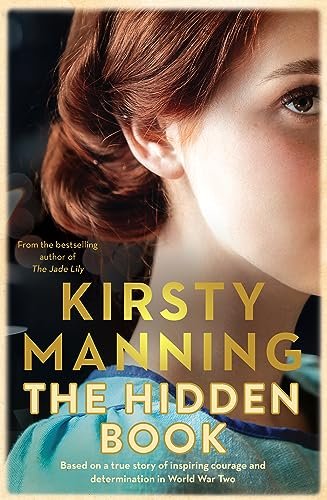Review of 'The Hidden Book' by Kirsty Manning
Review of 'The Hidden Book' by Kirsty Manning
Release date: August 29th, 2023
Publisher: Allen & Unwin
📖
REVIEW
The Hidden Book by Kirsty Manning is a powerful and unique World War II story that carves out of history an unforgettably painful series of events. A time when its victims never took for granted the most simplistic things of life. It is without question an admirable tribute to the people who saved clandestine photos of Mauthausen Concentration Camp, Austria. This is a story of sacrifice, resilience and perseverance—and one that honours the sanctity of human life.
The magnitude of suffering expressed in this novel is authentic. But even so, we can never truly know what these people endured. For even in imagining our worst nightmare, it will never come close to the reality they faced. Even still, we get a big enough glimpse to make us appreciate our freedom and to never take the simple things of life for granted (a message that resounds throughout this story). I truly admired the ingenuity of those who suffered under the Nazis regime. They pushed through normal limits, found ways to survive and reached deeply inside to grasp hidden threads of hope. Painted across these pages is an astounding level of endurance and courage.
The power of fiction, through using the right words, means an author can help us imagine experiences we may never have had. Kirsty has skilfully put us in the victims’ shoes and done an admirable job of helping us grasp a fragment of the pain these people underwent. We walk slowly through their sorrows but also dance in their victories. My favourite part of this novel (understandably) is when these people are rescued. The atmosphere changes: hearts become lighter when the allies march in and the enemies slink out. Kirsty has done a wonderful job demonstrating the joy and relief that sweeps through the village during and after the rescue. They celebrate their freedom but, of course, there is grieving, too, for many were lost in the fight.
Yet, beyond the rubble and remorse, the broken wills and fearful remainder, we can rejoice in a small measure of retribution. The fact these horrendous photos were saved and used as evidence to convict Nazis war criminals becomes a cherished victory.
The novel opens with a Prologue set in 1945 at Mauthausen Concentration Camp, Austria. Then moves in a current 1987 timeframe with Hannah, a thirteen year old girl living on a farm with her mother in New South Wales. She is excited about her Yugoslavian grandfather coming to visit. I loved the warmth that shone between these characters: family members that come together from across the world. This rosy glow is also reflected in the gorgeous landscape descriptions. But then the mood shifts when curious Hannah touches a special parcel wrapped in flour cloth brought by her grandfather in his suitcase. His demeanour quickly changes. Hannah has never heard her deda raise his voice before. Then shock hits Roza’s face as he spits out a word. And we know from the Prologue, that when Mauthausen is mentioned in the text, the painful memories of this family begin.
Roza hides the parcel but Hannah is curious. When her mum is busy, she finds the book and peeks inside. She discovers images of starving people and things young eyes should never see. Her mother is furious and forbids her to look at it again. But the mystery that surrounds this hidden book plays on her mind. As the years go by, she continues to seek answers and studies history in hope of understanding what she saw. She even decides to write her thesis on it. Because her mother never wants to talk about the past, Hannah must learn for herself. This quest to uncover the truth leads her on a trip to Mauthausen. She needs to know why her grandfather had this book in his possession and if he was a prisoner at Mauthausen?
The story is told from various perspectives: Hannah (in the most current), with Santiago and Lena providing the events of the past. It seamlessly moves between timelines and I found each thread equally riveting. Although the hidden book in the novel is an imagined album, a real one is present in the Sydney Jewish museum. The author’s acknowledgements provide a fascinating backstory of the novel’s inspiration. And even though many of the characters are fictional, they allow us to imagine what might have been.
Kirsty has succeeded in her wish to ‘bring to life the horror, injustice and intolerance of the Nazis regime onto the page.’ This is a well delivered story— tender, truthful, respectful and moving. It not only provides a series of profound snapshots of the terrifying world these people lived in, but it also speaks volumes of their courage and resilience. 5 Stars ⭐️⭐️⭐️⭐️⭐️
Many thanks to Allen & Unwin for my review copy.
